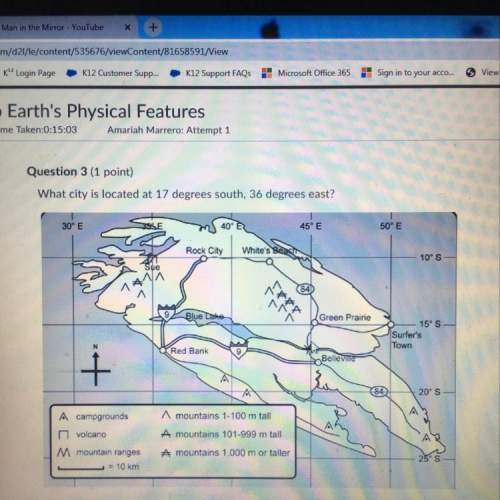
Chemistry, 05.11.2020 19:10 boyancecristina
Standardize an NaOH Solution Using Benzoic Acid as Primary Standard
Part 1: Prepare the NaOH Solution
Take a 250 mL beaker from the Containers shelf and place it on the workbench.
Take sodium hydroxide from the Materials shelf and add 0.800 g to the beaker.
Take water from the Materials shelf and add 200 mL to the beaker.
Calculate the expected concentration of the sodium hydroxide solution. The molar mass of NaOH is 39.997 g/mol.
Calculate and record the expected mass of benzoic acid required to react with 20.00 mL of a 0.100 M sodium hydroxide solution. Record the mass of benzoic acid using three significant digits
Part 2: Perform a Coarse Titration
Take a clean Erlenmeyer flask from the Containers shelf and place it on the workbench.
Take water from the Materials shelf and add 100 mL to the Erlenmeyer flask.
Add the required mass of benzoic acid calculated in step 5 of part 1 to the Erlenmeyer flask. The 100 mL of water should be enough to dissolve the solid benzoic acid.
Take phenolphthalein from the Materials shelf and add 2 drops to the Erlenmeyer flask.
Take a pH meter from the Instruments shelf and place it into the flask. Record the initial pH of the solution.
Take a burette from the Containers shelf and place it on the workbench.
Take the prepared sodium hydroxide solution from the workbench and add 50 mL to the burette. Pass the mouse cursor over the burette and a gray tool tip will briefly display the total volume in the burette as well as the volume dispensed. Record these initial volumes.
Move the Erlenmeyer flask onto the base of the burette.
Perform a coarse titration, adding large increments of titrant (~ 2 mL) by pressing and holding the stopcock at the bottom of the burette for 1-2 seconds. Pause after each dispensation. Record the volume dispensed.
Check if the end point has passed. When the reaction reaches the end point, the solution changes color. Also, as sodium hydroxide is added to the benzoic acid solution, the pH increases.
Stop once you reach the end point. Record the volume dispensed and pH at which this occurs. Record both the last dispensed volume where the solution was colorless (right before the end point) and the first dispensed volume where the solution changed color. You will use the volume dispensed before the end point in the fine titration.
Discard the Erlenmeyer flask by dragging it to the recycling bin beneath the workbench.
Part 3: Perform Fine Titrations
Prepare an Erlenmeyer flask as described in steps 1 - 5 in part 2 of experiment 1.
Take sodium hydroxide solution from the workbench and refill the burette to a total volume of 50 mL. Record this initial volume.
Move the Erlenmeyer flask onto the base of the burette.
Click and hold the stopcock of the burette to quickly add the before the end point volume of sodium hydroxide determined in the coarse titration.
Add titrant in small increments, down to one drop at a time. This can be tedious, but if you click and hold you might miss the exact end point of the titration.
When the solution changes color, stop adding titrant. Record the pH and volume dispensed.
Clear your workstation by dragging the Erlenmeyer flask to the recycling bin.
Repeat the fine titration two more times, and record the results.
Calculate the concentration of the sodium hydroxide solution. The rest of the sodium hydroxide solution can now be used in further lab work as a secondary standard with a reliably known concentration equal to the average of the three titrations.

Answers: 3


Another question on Chemistry

Chemistry, 23.06.2019 01:30
Which conclusion fits the data in the table? a. heat chemically changes chocolate and margarine. b. all solids become liquid at 100°f. c. removing heat from a substance it to melt. d. matter may change shape when it is heated.
Answers: 1

Chemistry, 23.06.2019 06:40
A250 g sample of water with an initial temperatureof 98.8 closes 6500 joules of heat. what is the finaltemperature of the water?
Answers: 1

Chemistry, 23.06.2019 07:00
Agas has an empirical formula ch4. 0.16g of the gas occupies a volume of 240cm^3 what is the molecular formula of the me anyone who !
Answers: 1

Chemistry, 23.06.2019 14:00
Which of the following represents a balanced nuclear equation showing bismuth-212 undergoing alpha decay followed by beta decay? (2 points) superscript 212 over subscript 83 bi yields superscript 4 over subscript 2 he + superscript 208 over subscript 81 tl yields x−superscript 208 over subscript 82 pb + superscript 0 over subscript -1 beta superscript 212 over subscript 83 bi + superscript 0 over subscript -1 beta yields superscript 4 over subscript 2 he + superscript 208 over subscript 81 tl yields x−superscript 208 over subscript 82 pb superscript 216 over subscript 85 as yields superscript 4 over subscript 2 he + superscript 216 over subscript 85 as yields superscript 216 over subscript 85 pb + superscript 0 over subscript -1 beta superscript 212 over subscript 83 bi yields superscript 0 over subscript -1 beta + superscript 208 over subscript 81 tl yields superscript 208 over subscript 82 pb + superscript 4 over subscript 2 he
Answers: 1
You know the right answer?
Standardize an NaOH Solution Using Benzoic Acid as Primary Standard
Part 1: Prepare the NaOH Soluti...
Questions

Mathematics, 30.10.2020 18:10









Physics, 30.10.2020 18:10

Mathematics, 30.10.2020 18:10

Mathematics, 30.10.2020 18:10

Mathematics, 30.10.2020 18:10

Mathematics, 30.10.2020 18:10


Social Studies, 30.10.2020 18:10

History, 30.10.2020 18:10







